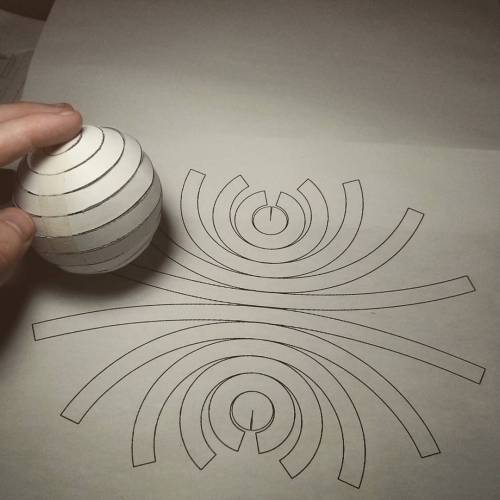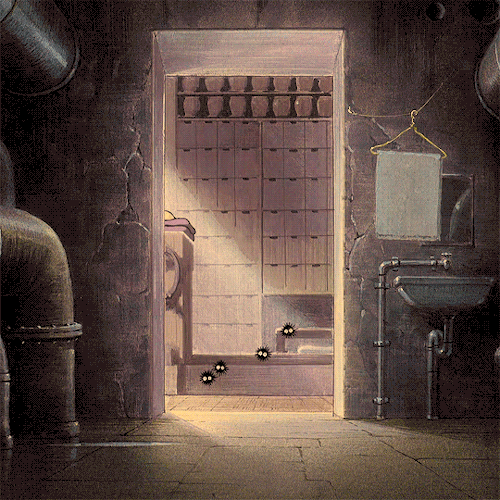Iphleandro-blog - Real
More Posts from Iphleandro-blog and Others
Kelston Boys’ High School perform a massive haka in honour of the new Maori carving on campus
Study tips
Be active while studying :
Do not mindelssly skip through your notes.Make sure you are fully understanding the material that you are working on. Ask yourself questions. If you can answer them , that’s cool, if you can’t, note them down on a post-it and ask your teacher or classmates or maybe google it. If you can’t focus take a break and come back later.
Set the mood for studying:
Wash you face and hands with cold water, or take a shower. Put on comfy clothes. Organize your study space and clean it up. Get yourself a snack and a cup of coffee or tea or just plain water, whatever works for you. Set the stuff you need for studying and get rid of anything else. If you don’t need your phone for studying, turn the wi-fi off and put it away from you. Start a study playlist if you want. Put your to do list right in front you and get to it.
Make a TO DO list:
Grab a white sheet of paper. Brain dump all the tasks you have to do for the day, prioritize them, and write them again in a clean way, while dismissing the unimportant tasks if you don’t have enough time.
Take breaks when you need them :
If you take too much you’ll lose focus, if you don’t take enough, your studying won’t be effective. If you can’t get yourself to study, set a timer for 30 min, take a 10 min break and work to add to the length of the studying each time.
Eat the frog :
Start with the boring and hardest tasks first. You’ll be more motivated to get work done after you get them out of the way.
Break up big goals to shorter clear tasks :
Don’t write for example ’ study maths ’ as a task, instead note exactly how you’re planning to do it, for instance ’ work 10 exercices from a certain book’ . It feels easier to get work done when it’s not just a vague goal.
Start homework as soon as you get. If you are busy, schedule a time block for doing it asap.
Break big projects to smaller tasks and schedule them on your planner.
You’ll more likely do them if you see them in your planner, then if it’s just an unclear deadline freaking you out and that you don’t know how to start.
Go to your classes and pay attention to your teachers:
Be ACTIVE. Ask questions, participate in class, it’s really helpful . Take your own notes, in your own way and don’t do just mindlessly note everything your teacher says. Pick just the important stuff or those that aren’t in the text book. Draw mind maps, lists, diagrams, use colors and leave space and margins.
When reviewing your notes, make them easier to understand by adding remarks from other sources in the margings.
I don’t know if it’s clear enough. But while reviewing my notes I like to use a pencil and try to make my notes easier to grasp, for example, write down a general way to solve all the problems that are similar to one that you have seen in class.
Study EVERYDAY:
Make studying a daily task. Don’t wait until the night before the test. Stay up to date with your classes.
Prepare your classes ahead of time time:
Read the text book. Google it. Watch YouTube videos. Take some notes and write questions for all the things you didn’t understand to ask in class. This way you won’t be overwhelmed in class and manage to not fall behind and make the most out if it.
Practice practice practice problems :
Work as much exercices as you can, and all the previous exams that you get your hands on. That way you know what the professor usually test the students on, and also you get used to working with your lessons, especially for maths and physics and such subjects.
Gray wolves by Chad Barry

A short note on how to interpret Fourier Series animations
When one searches for Fourier series animations online, these amazing gifs are what they stumble upon.
They are absolutely remarkable to look at. But what are the circles actually doing here?
Vector Addition
Your objective is to represent a square wave by combining many sine waves. As you know, the trajectory traced by a particle moving along a circle is a sinusoid:

This kind of looks like a square wave but we can do better by adding another harmonic.

We note that the position of the particle in the two harmonics can be represented as a vector that constantly changes with time like so:

And being vector quantities, instead of representing them separately, we can add them by the rules of vector addition and represent them a single entity i.e:



Source
The trajectory traced by the resultant of these vectors gives us our waveform.
And as promised by the Fourier series, adding in more and more harmonics reduces the error in the waveform obtained.


Have a good one!
**More amazing Fourier series gifs can be found here.
Mathematics, rightly viewed, possesses not only truth, but supreme beauty- a beauty cold and austere, without the gorgeous trappings of painting or music.
Bertrand Russell

(via spring-of-mathematics)

Can you flatten a sphere?
The answer is NO, you can not. This is why all map projections are innacurate and distorted, requiring some form of compromise between how accurate the angles, distances and areas in a globe are represented.
This is all due to Gauss’s Theorema Egregium, which dictates that you can only bend surfaces without distortion/stretching if you don’t change their Gaussian curvature.
The Gaussian curvature is an intrinsic and important property of a surface. Planes, cylinders and cones all have zero Gaussian curvature, and this is why you can make a tube or a party hat out of a flat piece of paper. A sphere has a positive Gaussian curvature, and a saddle shape has a negative one, so you cannot make those starting out with something flat.
If you like pizza then you are probably intimately familiar with this theorem. That universal trick of bending a pizza slice so it stiffens up is a direct result of the theorem, as the bend forces the other direction to stay flat as to maintain zero Gaussian curvature on the slice. Here’s a Numberphile video explaining it in more detail.
However, there are several ways to approximate a sphere as a collection of shapes you can flatten. For instance, you can project the surface of the sphere onto an icosahedron, a solid with 20 equal triangular faces, giving you what it is called the Dymaxion projection.

The Dymaxion map projection.
The problem with this technique is that you still have a sphere approximated by flat shapes, and not curved ones.
One of the earliest proofs of the surface area of the sphere (4πr2) came from the great Greek mathematician Archimedes. He realized that he could approximate the surface of the sphere arbitrarily close by stacks of truncated cones. The animation below shows this construction.
The great thing about cones is that not only they are curved surfaces, they also have zero curvature! This means we can flatten each of those conical strips onto a flat sheet of paper, which will then be a good approximation of a sphere.
So what does this flattened sphere approximated by conical strips look like? Check the image below.
But this is not the only way to distribute the strips. We could also align them by a corner, like this:
All of this is not exactly new, of course, but I never saw anyone assembling one of these. I wanted to try it out with paper, and that photo above is the result.
It’s really hard to put together and it doesn’t hold itself up too well, but it’s a nice little reminder that math works after all!
Here’s the PDF to print it out, if you want to try it yourself. Send me a picture if you do!
Work


A for-funsies furry portrait of this cool dude with the fabulous art -> @poisondynamite / @redhotsneakers <- Go check ‘em out!!!!! >w<)/

Rest in peace, Marie Severin. A visionary artist for Marvel and co-creator of #Spiderwoman, her work shaped comics and inspired millions.
“Spiderwoman” by ayhotte: http://bit.ly/2LG2IGT
-
 miss-stoneyy liked this · 6 years ago
miss-stoneyy liked this · 6 years ago -
 debo704 liked this · 6 years ago
debo704 liked this · 6 years ago -
 damiendutch liked this · 6 years ago
damiendutch liked this · 6 years ago -
 nairakobo reblogged this · 6 years ago
nairakobo reblogged this · 6 years ago -
 chicsosweet reblogged this · 6 years ago
chicsosweet reblogged this · 6 years ago -
 chicsosweet liked this · 6 years ago
chicsosweet liked this · 6 years ago -
 theamericanoutlawrobs reblogged this · 6 years ago
theamericanoutlawrobs reblogged this · 6 years ago -
 theamericanoutlawrobs liked this · 6 years ago
theamericanoutlawrobs liked this · 6 years ago -
 theinfamouschubbykitten reblogged this · 6 years ago
theinfamouschubbykitten reblogged this · 6 years ago -
 soupiing reblogged this · 6 years ago
soupiing reblogged this · 6 years ago -
 neidandem liked this · 6 years ago
neidandem liked this · 6 years ago -
 choco-cheese liked this · 7 years ago
choco-cheese liked this · 7 years ago -
 mio-kusanagi liked this · 7 years ago
mio-kusanagi liked this · 7 years ago -
 canvas-rose liked this · 7 years ago
canvas-rose liked this · 7 years ago -
 zamevy reblogged this · 7 years ago
zamevy reblogged this · 7 years ago -
 zamevy liked this · 7 years ago
zamevy liked this · 7 years ago -
 quibbitty reblogged this · 7 years ago
quibbitty reblogged this · 7 years ago -
 quibbitty liked this · 7 years ago
quibbitty liked this · 7 years ago -
 starsmlady liked this · 7 years ago
starsmlady liked this · 7 years ago -
 levyrin-kerthz reblogged this · 7 years ago
levyrin-kerthz reblogged this · 7 years ago -
 levyrin-kerthz liked this · 7 years ago
levyrin-kerthz liked this · 7 years ago -
 the-traveler-of-worlds liked this · 7 years ago
the-traveler-of-worlds liked this · 7 years ago -
 senistian liked this · 7 years ago
senistian liked this · 7 years ago -
 monziiy reblogged this · 7 years ago
monziiy reblogged this · 7 years ago -
 shakabrah44 liked this · 7 years ago
shakabrah44 liked this · 7 years ago -
 city-night-witch liked this · 7 years ago
city-night-witch liked this · 7 years ago -
 gladiatorgod12 reblogged this · 7 years ago
gladiatorgod12 reblogged this · 7 years ago -
 gladiatorgod12 liked this · 7 years ago
gladiatorgod12 liked this · 7 years ago -
 copripiumone liked this · 7 years ago
copripiumone liked this · 7 years ago -
 dragonaer123 reblogged this · 7 years ago
dragonaer123 reblogged this · 7 years ago -
 dragonaer123 liked this · 7 years ago
dragonaer123 liked this · 7 years ago -
 pam-pillow reblogged this · 7 years ago
pam-pillow reblogged this · 7 years ago -
 raggamaninof liked this · 7 years ago
raggamaninof liked this · 7 years ago -
 cubepenguin1 liked this · 7 years ago
cubepenguin1 liked this · 7 years ago -
 melsjustgay liked this · 7 years ago
melsjustgay liked this · 7 years ago -
 cocoaruka reblogged this · 7 years ago
cocoaruka reblogged this · 7 years ago -
 lavbonr liked this · 7 years ago
lavbonr liked this · 7 years ago